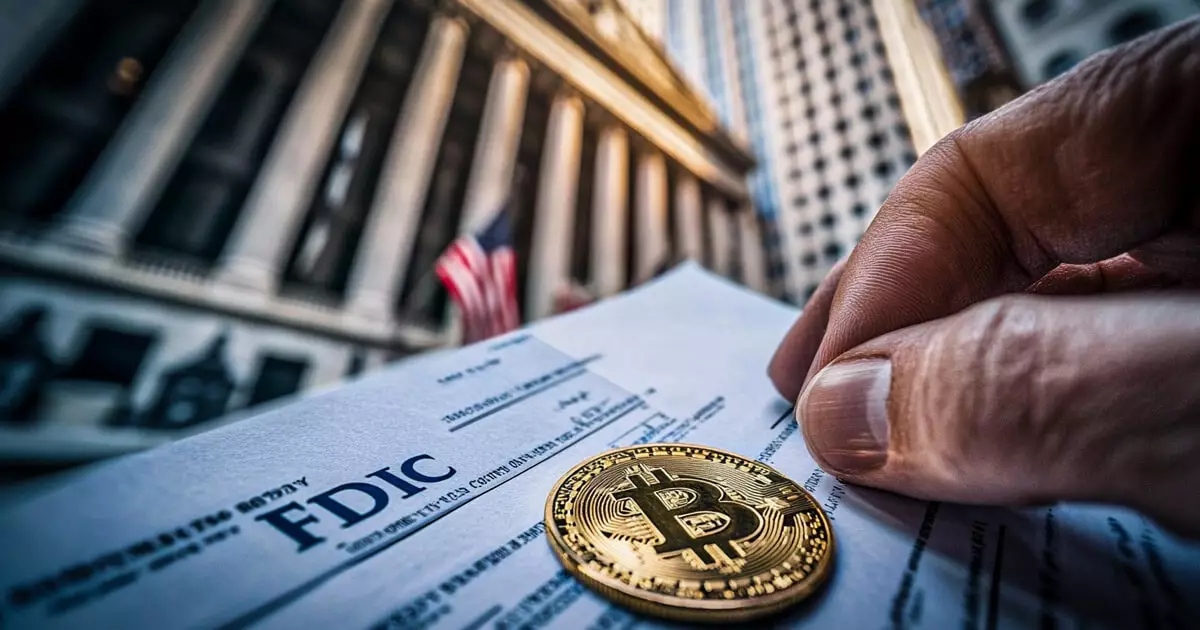On March 28, 2025, the Federal Deposit Insurance Corporation (FDIC) officially took a bold step into the digital age, altering its stance on banking institutions engaging with cryptocurrency. Acting Chairman Travis Hill announced that federally supervised banks could now participate in crypto-related activities without the prerequisite of seeking FDIC approval, so long as they adhere to established safety and soundness standards. This marks a significant departure from previous stringent regulations that had stifled innovation and left banks in a state of confusion regarding the legality of crypto ventures.
The shift comes as a vital turning point in U.S. financial policy. For too long, the FDIC seemed entrenched in an arcane regulatory mindset, stymying the potential for banks to engage with emerging technologies. By rescinding the outdated FIL-16-2022 guidance, the FDIC has finally acknowledged the inherent need for pace in financial innovation, a crucial response to an ever-evolving technological landscape.
Acknowledging Past Mistakes
One cannot overlook the significance of Hill’s statement highlighting the FDIC’s prior failures. Under the past administration, banks allegedly faced clandestine restrictions dubbed “Operation Chokepoint 2.0,” a term now synonymous with bureaucratic overreach. This approach was counterproductive and only served to create a murky environment of fear and uncertainty among financial institutions. Hill’s observation suggests a candid recognition that what transpired over the previous three years was not merely ineffective but detrimental to the burgeoning crypto sector.
Such a critique reflects an important realization about regulatory oversight. As an advocate of center-right liberalism, I hold the conviction that governance should enable, not obstruct, free-market innovation. Financial institutions should be emboldened to leverage digital assets to enhance their services rather than hindered by fear of vague regulations. This is a restoration of agency—a call to empower banks rather than shackle them.
Collaboration with Other Regulatory Bodies
The FDIC’s commitment to collaborating with the President’s Working Group on Financial Markets and other regulatory bodies is equally important. Acting in concert with agencies like the U.S. Securities and Exchange Commission (SEC) is essential for creating a coherent regulatory environment. The FDIC’s willingness to replace outdated interagency documents on digital assets signifies an urgent response to the demand for consistency and clarity in regulations. A united front among regulators will enhance trust and provide a comprehensive framework for banks wishing to venture into the crypto space.
Moreover, this collaboration paves the way for a necessary dialogue between regulators and the industry. Financial institutions need a detailed roadmap and a transparent regulatory framework, which were sorely lacking in previous years. The risk of misunderstanding and miscommunication was high, leading to confusion and halted innovation. Now, the groundwork is being laid to facilitate a smoother operational landscape.
Redefining Compliance Standards
In a profound move, Hill called for a reevaluation of how the Bank Secrecy Act (BSA) is applied across financial institutions. BSA compliance should never serve as a pretext to deny access to banking services, particularly when considering the transformative potential of blockchain technology. He emphasized the need to promote innovation while meeting regulatory requirements—an idea that resonates with the principles of a free-market economy.
The potential for banks to explore services such as tokenized deposits and blockchain-based financial infrastructures without burdensome regulatory delays is immense. This is not merely a functional change but a crucial evolution in how we perceive banking in the context of modern technology. Empowering banks to confidently engage in these new arenas speaks to the FDIC’s newfound commitment to facilitating innovation rather than stifling it.
The Road Ahead
As the FDIC sets its sights on reimagining America’s banking landscape, the broader implications are noteworthy. This modern approach to digital assets not only sends a message to the crypto community that it is welcome but could also inspire a resurgence of entrepreneurial spirit in the financial sector. The demand from industry participants and lawmakers for a transparent regulatory roadmap cannot be overstated.
Now, with a reformed stance and proactive engagement in the crypto domain, the FDIC has the opportunity to position the U.S. as a global leader in financial innovation, rather than a laggard burdened by fear of change. Ultimately, the future of banking must embrace adaptation to technological advancements rather than clinging to the familiar, and this guidance is a crucial step in that direction.














Leave a Reply